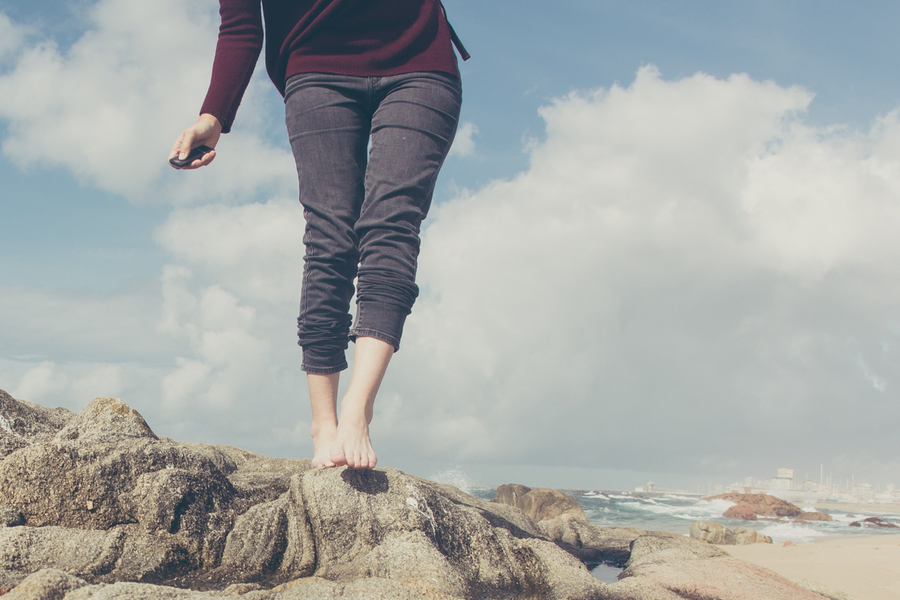
In part 1 of this article, I explained some causes and symptoms of trigger points in the deep calf muscle trio of tibialis posterior, flexor digitorum longus (FDL) and flexor hallicus longus (FHL). One common contributor is walking or running on uneven surfaces such as rocks, sand or imperfect lumpy grass. These are delicious and nutritious surfaces for our feet to ramble across but we wouldn’t want troublesome trigger points to slow us down! In this article, I will share tips on how to massage, stretch and rejuvenate these muscles.

You can access trigger points in two of these deep calf muscles at the junction between the two heads of gastrocnemius (the bulky wide muscle at the top of your calf). You can use your opposite knee or a Yoga Tune Up® therapy ball to burrow in between the space at the top center of your calf. If you aim your knee straight in, you are searching for and massaging tibialis posterior trigger points (Image 1).
In this same position, if you aim the pressure slightly in toward the tibia/inner calf you are accessing trigger points in flexor digitorum longus. Using the same technique, but placing the knee about a third of the way up the calf, you can access flexor hallicus longus by applying pressure toward the fibula on the outer calf.

Tibialis posterior can also be accessed at the medial edge of the tibia (shin bone) by placing pressure using your thumb or Yoga Tune Up Therapy Ball one hand breadth below the tibial tuberosity (the little notch an inch or so below your knee cap) and one finger breadth medial to the medial edge of the tibia (inner side of shin bone) (Image 2). It shouldn’t take much searching to find out if there’s a trigger point dwelling there!
Once you massage these muscles, they should be more relaxed. This is a great time to stretch and utilize them! To stretch tibialis posterior, bend your knee, bring your foot up and out to the side. With the foot angled up and out, place the ball of your foot on a Roll Model® ball, half foam roller, or rolled up towel/yoga mat, resting your heel on the floor. I like using the ALPHA Ball because it’s bigger and gives a deeper stretch. You can alternate this stretch with resistance by pressing the ball of your foot down and inward.

To stretch flexor hallucis longus, place your big toe on a Roll Model® therapy ball with the rest of the foot staying on the floor (Image 3). To lengthen flexor digitorum longus, place all toes except your big toe on the ball, with the rest of your floor on the floor, and focus on a stretching a couple toes at a time. To add a strengthening/PNF component, press the toes down into the ball for a few seconds.
Moving your toes and feet in various directions will help wake them up and condition them to be called upon when you need them. I like to do the following Yoga Tune Up® exercises for these muscles; Big Toe/Little Toe Isolations, Barbie Doll Foot and Dandasana with Ankle Circles. See how to do them in the video below!
Though it can be challenging to transition to barefoot or minimalist style shoes, and use them on rocks, logs, dirt paths, etc…I highly recommend it to help invigorate the muscles in your calves and feet that may have fallen asleep on you! The techniques shared in this article can help you build the strength and dexterity for the challenge 🙂



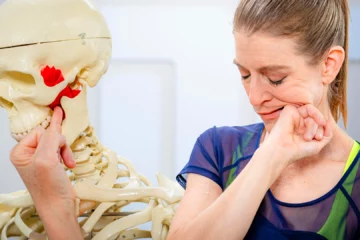
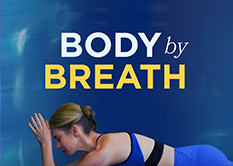



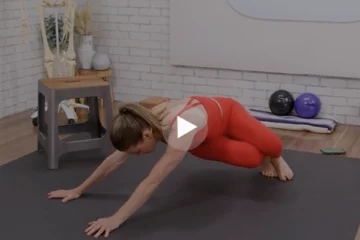
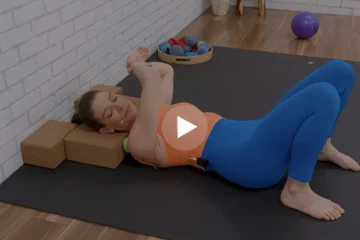


Christina, great muscle descriptions and how to access self-release with the therapy balls. Your pictures were helpful in isolating the areas of focus. The calf muscles hold so much tension in my body, more than any other area (aside from my jaw where I occasionally hold stress). I often neglect my calves and save them for the end, normally skipping them in some of my routines because I don’t have the patience in moments to deal with the discomfort that, for me, is very emotional in nature. Your article reinsured me to give a little more love to my calves, and maybe to start with them first during my movement practice. I very much enjoyed the linked video of Jill working the feet and ankles that directly feed in to the calves. I also experience some type of foot release any time I roll out my calves. Great to have the feet and ankles included in this deep calf muscle conditioning routine you shared with us. Thanks!
Wow! Burrowing the Yoga Tune Up balls into my calf muscles was quite shocking. I had no idea how sensitive that area has been. I shared this with a student who has chronic tightness in his calf muscles from tennis and he plans to incorporate this into his pre-game routine.
I have often suffered from tight calf muscles and. I appreciate how you first provided proprioception to the muscles by using the yoga therapy balls and then discussed how to both use and stretch these muscles right afterward. I also appreciate how navigate tough terrain barefoot can impact the trigger points in your calves.
Calves are so heavily utilized in everyday life, and so often neglected. Often, I find that my yoga students’ tight forward folds and downward dogs are less an issue of tight hamstrings, and more overworked, knotted calves. This is a great rolling sequence to get immediate gratification–via observing noticeable lengthening of the posterior chain!
This was very helpful to see how important self massage is and what different ways you can access the many layers of the calf muscles.
A perfect article for practical application to help with calf and lower leg problems.i will make good use of the tips
I only recently started rolling my feet about a year ago and it’s made such a difference. I discovered that my calf and surrounding areas are huge trigger points. I mean ouch! But after trying some of these ball techniques I now experience less painful places and more release, relaxation and even energy in my legs.
My Legs are always challenged from my everyday life. Thanks for the tip. Great Blog Christina
I’m traveling in Portugal right now and the amount of uneven surface trafficing is insane. I’m going to roll out right now with these teqniques right now, yay!
Such great tips for the calf and details for where to put the ball, whether it me medial or outer calf. I often work with the foot muscles to stretch the calf, but usually starting with the heel. Learning the stretch with the toes is an awesome addition to my calf stretching practice.
Thank you for the detailed description on the lower leg when using the role model therapy balls. I find this helpful as I enjoy running outside and walking trails. I know it will be beneficial to share with my other clients that are avid runners or even wear high heels frequently.
Yes, I did found the trigger points ;-). Thank you for the clear explanation. The lower leg especially, but also the feet happens to dwell in the forgotten exercise box for me, this is a great reminder to pay attention to this part of the body more.
Calves have always been a sore and very tight spot for me. I just finished using this technique and I feel a big difference already, thanks for shedding light on these trigger points!
I love how this article helps me to understand at a more precise level why I love rolling my calves in the toted Therapy balls on a block. I especially enjoy medially rotating my hip, pointing my toes inward while moving up and down the calf and I now know the reason is this allows me to target the tibialis posterior! I find these muscles have a tendency to get extremely tight and having these tools to care for them is very helpful.
Clear and in depth explanation. My tibialis posterior was sprinkled with trigger spots. I roll my gastrocnemius (in the past before Roll Model Therapy Balls with a foam roller) but never thought to go in medially to really get the good spots, felt instant release – my whole lower leg was fluffed and energized. As if I had a spring in my step. Thank you!
As a minimalist runner and hiker, these tips will definitely help. I would also love to get my mum to do them who suffers from leg cramps and see what kind of a difference it will make for her. Thank you!
Thank you. I would like to get myself freed up in my ankles and feet enough to transition to minimal or barefoot shoes. You’re recommendations are spot on for this.
Christina, this is really helpful for navigating calf trigger points. I especially appreciate your advice for navigating via the tibial tuberosity. Thanks!
Great anatomy lesson on the lower leg.i realize that I need to understand this in more detail,even though I teach this rolling technique I did not fully understand the anatomical reasoning.
First of thank you for this information. Now I will have to read up on Dr. Kharrazian. I have an autoimmune disease and I’m willing to try out this abdominal work to see if it helps me. I figured that I will work on my own body to what results I get. This blog gave me lots of food for thought and has given me more information to research.
As a trail runner, I appreciate these exercises to find trigger points in the deep calf muscles and address the calves as part of my self-care and maintenance routine. Thank you.
thanks…. enjoyed it.
Des conseils précieux à intégrer, merci!
La combinaison de ces massages avec ces exercices de mobilité pieds/chevilles me donnent des idées pour de la rééducation chez les personnes âgée en perte d’autonomie ou voir même pour assister des gens désirant améliorer leur performance sportive à la course, football, soccer… etc…Ou, voir même durant les activités quotidiennes… avoir une meilleure réponses des pieds/chevilles/mollets dans des situations ou l’on pourrait perdre pied (l’hivers sur des plaques de glace ou bien sur des surfaces boueuses ou des souches lors de randonnées pédestre.
The Barbie Doll Feet Pose video that was tagged in this post is great! I also liked how this post described trigger points for the feet and how to roll out the main muscles where these trigger points occur, I wear vibram shoes (5 fingers) still, so this is very eye-opening for me.
Merci pour ce partage bien précis permettant d’atteindre les parties profondes des mollets et par la même de pouvoir soulager pas mal de monde avec les balles.
My ahh yoga tune up moment was when I realized that rolling my feet would bring relief to my constantly tight calves. I also found that the tibialis posterior is very tender and have begun rolling that out more often using a different technique than is shown here.
Je trouve ça très intéressant comme exercice pour les pieds. J’oublie souvent de les étirés pour enlever les tensions qui s’y trouvent!! Je compte bien l’essayer :)!
Wow!
I’m always looking for something to help my feet. These look like great exercises to help relieve tension and tired feet.
Thanks for this meaningful piece. I love to run and nowadays I am more and more in the mountains on rocky, uneven terrain. After a long day in the mountains, my calves feel knotty and cramped. You’ve inspired me to do more self-care with balls and self-massage to work out the tough spots. I love the idea of rolling out my flexor hallicus longus and flexor digitorum longus for happy healthy calves. I am interested in going to a minimalist shoe, but will have to ease my way there slowely as I am a bit addicted to some cushioning and waffle tread for traction.
Thank you! I do daily long mountain hikes with my (very energetic) puppy. My feet and calf muscles are screaming at me much of the time. A great reminder to give these feet of mine some TLC! I will use this for myself and introduce it to my clients too!